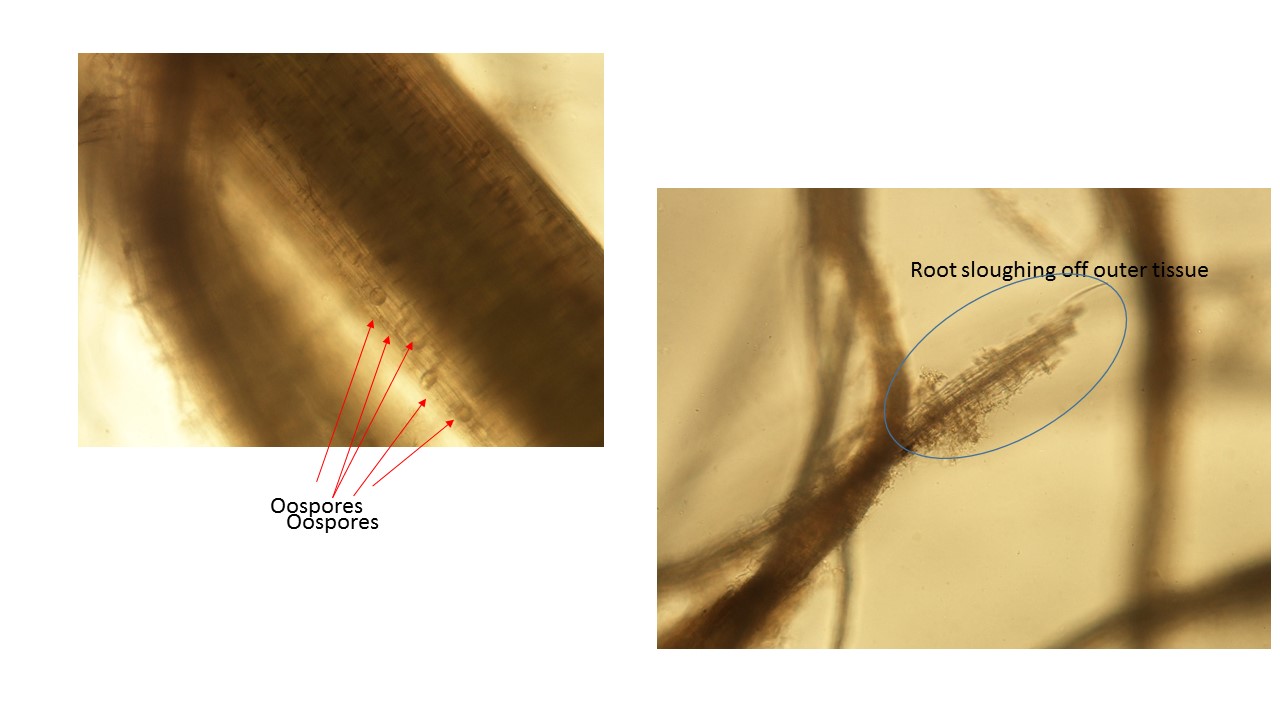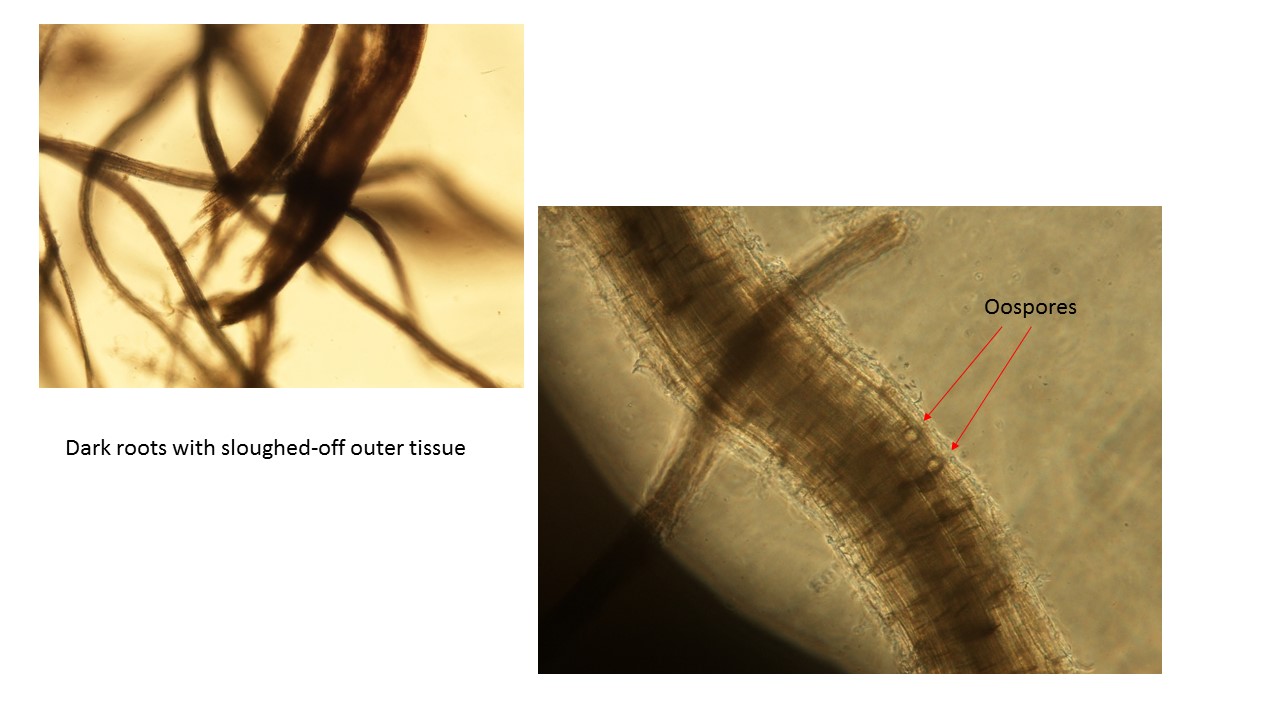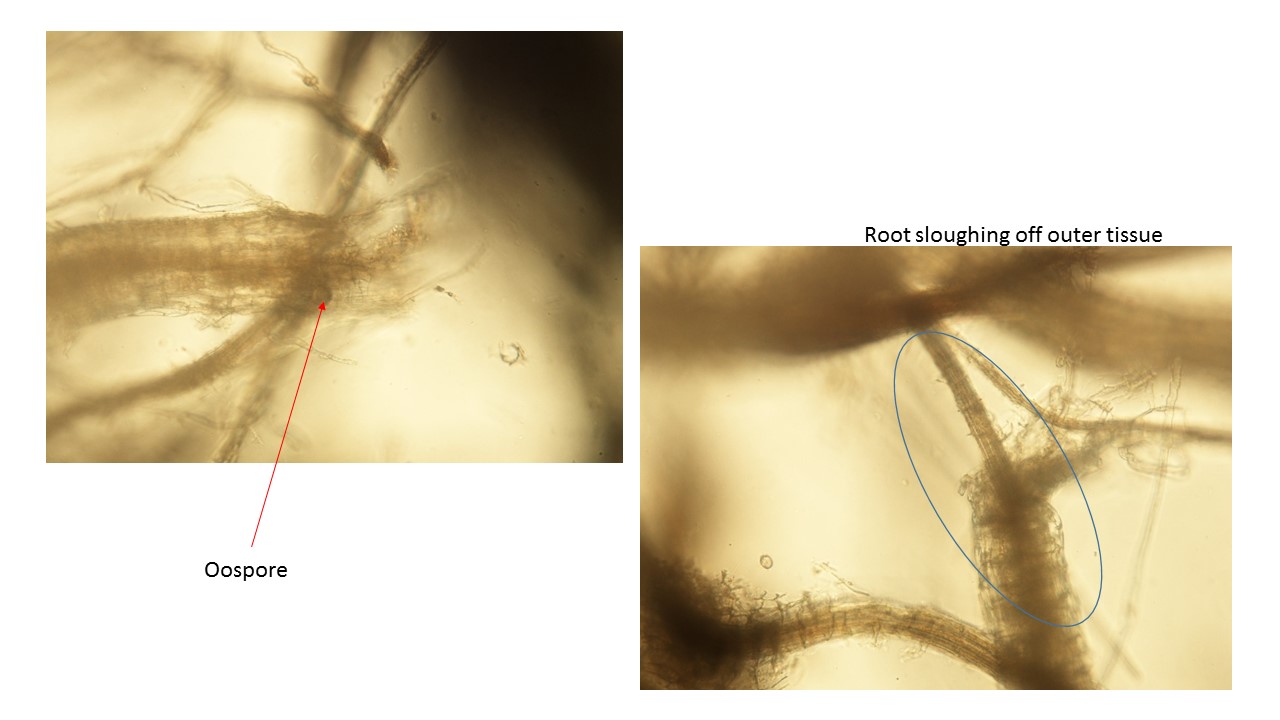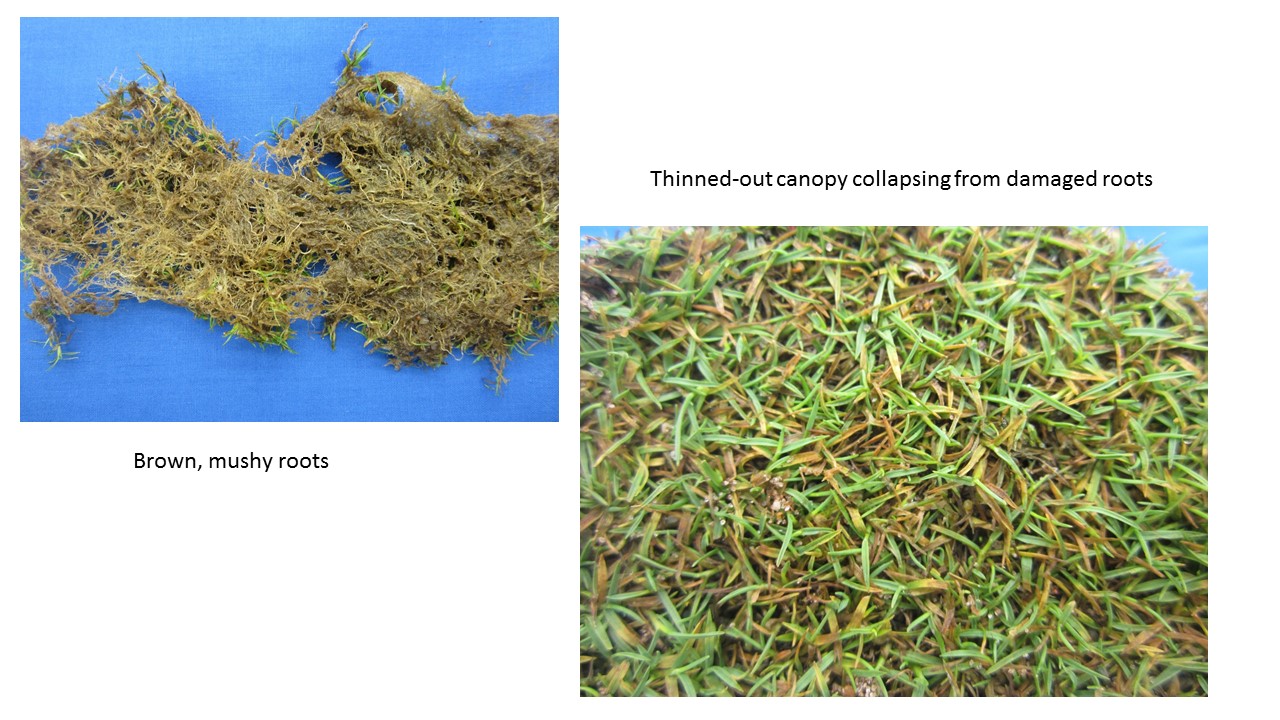(Megan Kennelly, KSU Plant Pathology)
“We got six inches of rain, and the golfers are saying, ‘Hey, isn’t it great for the turf that we are getting all this rain?’ Hah – Not exactly!”
That was part of a recent conversation with a superintendent in south central Kansas. Yes, moisture is good, but not 6 inches all at once! It seems that this year the water is either OFF or ON. When it is OFF it is really OFF. When it is ON, it is coming down in buckets. I guess nobody gets exactly what they want when they need it.
We continue to see poor rootzones on all kinds of plants, from trees to turf to tomatoes to petunias. Putting greens are really suffering. I’m seeing lots of brown, mushy roots with tissue sloughing off. Poa annua is also checking out in the heat, big time.
Below are some pics of roots. These are some older pics I have posted before, but they look just like most of the roots I’ve been looking at for the past couple of weeks. In some cases Pythium root rot is occurring as well, but in many cases the turf seems to be declining all on its own. For example, I had some samples where multiple plugs were submitted from multiple greens. All the roots were in poor health, but I found Pythium (at a low level) in just a few of them.
Root images:
What to do?
Check out the post today from Dr. Fry with some tips about managing bentgrass to prevent summer decline. Click HERE.
Another great set of tips is outlined HERE, starting on page 6, from U of Kentucky.
For Pythium root rot, here is an excellent site from NCSU, where Dr. Jim Kerns has conducted research on this disease.
http://www.turffiles.ncsu.edu/diseases/pythium-root-rot
In current research, Dr. Kerns reported in a Tweet that he also saw good results with Signature Xtra watered in (click HERE).
To date, we have not had a different disease, Pythium root dysfunction, occur in Kansas. At least, I have not seen it any any samples run through KSU. I did just learn from our neighbor Dr. Lee Miller at U. of Missouri that they picked up that disease in St. Louis. Lee mentions it in his update HERE if you want to learn a little more about it.




